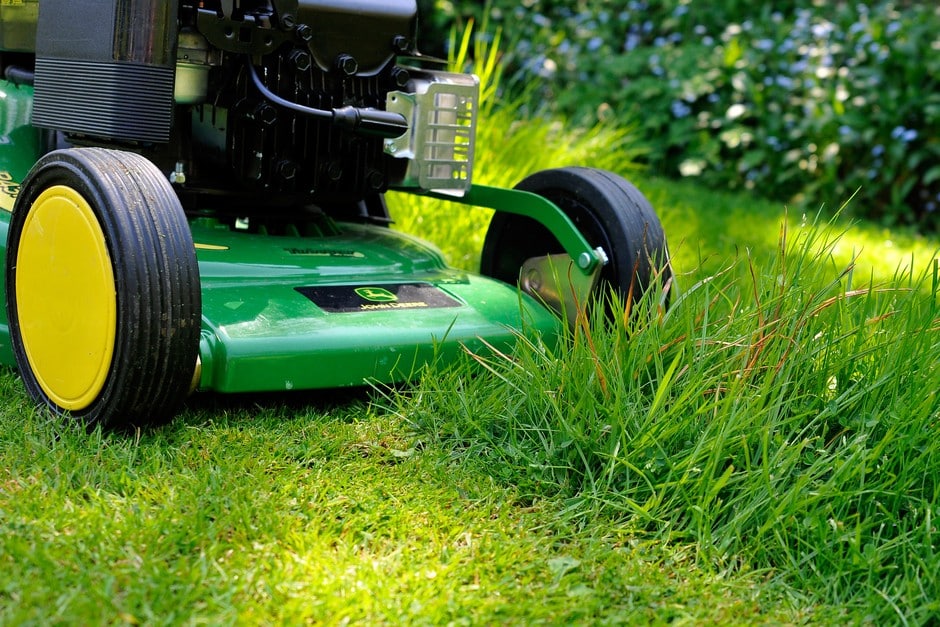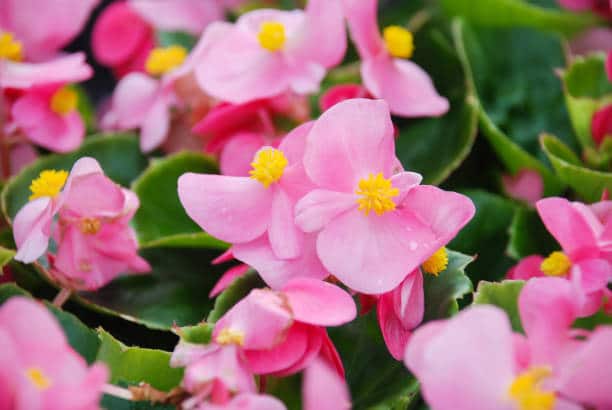Small water features are a great way to add interest and tranquility to your home or garden. They can be as simple as a birdbath or as elaborate as a pond with waterfalls and landscaping. With a little planning and care, you can easily create a small water feature that will enhance your outdoor space.
Table of contents
- How Do You Make An Easy Water Feature?
- Can I Install A Water Feature Myself?
- What Plants Look Good Around A Water Feature?
- How to decorate a water feature?
- What is the easiest water feature to maintain?
- Can I paint my water feature?
- How do you color water in a water feature?
- What is the best material for a water feature?
- Which is the best place for water features in a house?
- Feng Shui Considerations
- Common Water Feature Maintenance Tips
- Conclusion
- FAQs
How Do You Make An Easy Water Feature?
There are many ways to make an easy water feature. One of the simplest is to use a container, such as a pot or bucket. Simply plug the drainage hole with a cork or plastic wrap, and then fill the container with water.
You can add rocks or pebbles to the bottom of the container for decoration, and then place a plant or two on top.
If you want to add a bit of movement, you can place a small solar-powered pump in the container and let it trickle water over the rocks.
Another easy way to make a water feature is to use a fountain kit. These kits come with everything you need to create a simple fountain, including a pump, basin, and spigot. All you have to do is assemble the kit and place it in the desired location.
If you’re feeling a bit more ambitious, you can create a more elaborate water feature, such as a pond or waterfall. These projects require more planning and construction, but they can be very rewarding.
Can I Install A Water Feature Myself?
Most small water features can be installed by homeowners with basic DIY skills. However, if you’re not comfortable with DIY projects, you can always hire a professional to install your water feature for you.
Related Post: How to Clean a DVD | Full Guide
What Plants Look Good Around A Water Feature?
There are many plants that look good around a water feature. Some popular choices include:
Water lilies: These beautiful flowers thrive in ponds and other water gardens.
Ferns: Ferns prefer shady, moist environments, so they’re a great choice for planting around water features.
Bamboo: Bamboo is another popular choice for planting around water features. It adds a touch of elegance and sophistication to any landscape.
Hostas: Hostas are shade-loving plants that come in a variety of colors and sizes. They’re a great choice for adding texture and interest to your water feature area.
Irises: Irises are colorful flowers that bloom in the spring and summer. They’re a great addition to any water feature.
How to decorate a water feature?
There are many ways to decorate a water feature to enhance its visual appeal and make it a more inviting part of your landscape. Some ideas include:
Using plants and flowers: Place plants and flowers around the water feature to create a lush and welcoming atmosphere. Choose plants that thrive in moist conditions, such as ferns, hostas, and water lilies.
Adding rocks and gravel: Rocks and gravel can add texture and visual interest to your water feature. You can use them to create a natural-looking rock basin, or to add a decorative border around the feature.
Incorporating lighting: Lighting can make your water feature stand out at night and create a magical ambiance. Use underwater lights to illuminate the water from below, or install spotlights to highlight the plants and landscaping around the feature.
Adding sculptures and figurines: Sculptures and figurines can add a touch of whimsy and personality to your water feature. Choose pieces that complement the style of your garden and the overall aesthetic you are trying to achieve.
Creating a focal point: Use your water feature as a focal point in your garden by placing it in a prominent location and surrounded it with other landscaping elements, such as a patio, seating area, or walkway.
The easiest water feature to maintain is typically a self-contained fountain or a small pondless waterfall. These features do not require a large basin of water, so they are less prone to algae growth and debris accumulation. They are also easy to clean and maintain, and they do not require as much electricity as larger water features.
Here are some specific tips for decorating different types of water features:
Fountains: For a more traditional look, place your fountain in a central location in your garden and surround it with a circular bed of flowers. For a more contemporary look, install your fountain in a minimalist setting with clean lines and geometric shapes.
Ponds: If you have a small pond, you can decorate it with a few floating plants, such as water lilies or hyacinths. For a larger pond, you can add a small island or bridge to create visual interest.
Waterfalls: Waterfalls can be a dramatic addition to your garden. To enhance the visual impact, place your waterfall in a secluded area surrounded by lush plants and trees.
No matter what type of water feature you choose, be sure to decorate it in a way that reflects your personal style and taste. With a little creativity, you can create a beautiful and inviting water feature that will add value to your home and provide you with years of enjoyment.
Related Post: Top 30 inspirational commercials that sold out their products
What is the easiest water feature to maintain?
The easiest water feature to maintain is a self-contained fountain. These fountains are typically small and portable, and they have a reservoir that holds the water.
The water is then pumped up to the top of the fountain and recirculated. Self-contained fountains do not require any plumbing or filtration, and they are very easy to clean.
Here are some specific examples of low-maintenance water features:
Bird baths: Bird baths are a great way to attract birds to your garden, and they are very easy to maintain. Simply fill the bird bath with fresh water every day and scrub it out with a brush once a week to remove algae and debris.
Self-contained bubbling containers: These fountains are made from a variety of materials, such as ceramic, glass, or stone. They have a small reservoir that holds the water, and a pump that circulates the water up and over the container.
Self-contained bubbling containers are very easy to maintain, and they can be placed anywhere in your home or garden.
Miniature ponds: Miniature ponds are a great way to add a touch of nature to your garden. They are typically small enough to fit on a patio or deck, and they do not require any plumbing or filtration. Simply fill the pond with water, add a few plants, and enjoy the soothing sound of the water.
When choosing a low-maintenance water feature, it is important to consider the following factors:
Size: The size of the water feature will determine how much maintenance it requires. Smaller water features are generally easier to maintain than larger ones.
Location: The location of the water feature will also affect its maintenance needs. Water features that are located in shady areas will be less likely to develop algae, while water features that are located in full sun will need to be cleaned more frequently.
Style: Water features come in a variety of styles, so you can choose one that complements your existing décor.
With a little care and attention, you can enjoy the beauty and tranquility of a water feature without having to spend a lot of time on maintenance.
Top 10 Ideas for Small Water Features – Explain in details with images
1. Water fountains
Water fountains are a classic and versatile choice for small water features. They come in a wide variety of styles, from simple bubblers to ornate sculptures. You can also find fountains that are solar-powered or have built-in lighting.
2. Miniature ponds
Miniature ponds are a great way to add a touch of nature to your garden. They can be as small as a few feet wide and can be stocked with fish and plants. Miniature ponds are also relatively easy to maintain.
3. Birdbaths
Birdbaths provide a place for birds to drink and bathe. They come in a variety of styles and materials, so you can find one that fits your garden décor. Birdbaths are also a great way to attract birds to your yard.
4. Japanese water gardens
Japanese water gardens are known for their serenity and beauty. They typically feature a koi pond, a waterfall, and a variety of plants. Japanese water gardens can be a bit more challenging to create than other types of small water features, but they are definitely worth the effort.
5. Rock ponds/rock gardens
Rock ponds and rock gardens are a great way to add a natural element to your garden. They can be as simple as a few rocks placed around a basin of water or as elaborate as a cascading waterfall. Rock ponds and rock gardens are also relatively low-maintenance.
6. Bubbling containers
Bubbling containers are a simple and elegant way to add a water feature to your garden. You can use any type of container, such as a pot, a bowl, or a bucket. Simply fill the container with water and add a bubbler. Bubbling containers are a great way to add interest to a small space.
7. Water basins
Water basins are a versatile water feature that can be used in a variety of ways. You can use them to create a reflecting pool, a water garden, or a simple accent piece. Water basins come in a variety of sizes and materials, so you can find one that fits your needs.
8. Spas
If you’re looking for a luxurious water feature, a spa is a great option. Spas come in a variety of sizes and features, so you can find one that fits your budget and needs. Spas are a great way to relax and unwind after a long day.
9. Waterfalls
Waterfalls are a dramatic and eye-catching water feature. They can be as simple as a small waterfall spilling into a basin of water or as elaborate as a multi-tiered waterfall with a pool at the bottom. Waterfalls are a great way to add a touch of nature to your garden.
10. Stairway water features
Stairway water features are a unique and stylish way to add a water feature to your garden. They can be made from a variety of materials, such as stone, wood, or concrete. Stairway water features are a great way to add interest to a sloping area of your garden.
Related Post: Denim Insulation vs. Fiberglass Insulation | How Denim Insulation Works
Can I paint my water feature?
Yes, you can paint your water feature to add color and vibrancy to your outdoor space. However, it’s crucial to use the correct type of paint specifically designed for water features.
Regular paints are not waterproof and will quickly deteriorate when exposed to water, potentially contaminating the water itself.
How do you color water in a water feature?
Here’s a step-by-step guide on how to color water in a water feature:
Drain the Water Feature: Before applying any paint, it’s essential to completely drain the water feature to ensure proper paint adhesion and prevent contamination.
Clean the Water Feature: Remove any dirt, algae, or debris from the surface of the water feature using a mild detergent and a soft brush. Allow the surface to dry completely.
Choose Water Feature Paint: Select a water-resistant paint specifically designed for use on water features. These paints are formulated to withstand constant water exposure and will not harm the aquatic environment.
Apply Paint: Apply the paint evenly using a high-quality paintbrush or roller. Start with a thin coat and allow it to dry completely before applying additional coats if necessary.
Cure the Paint: Follow the manufacturer’s instructions for curing the paint. This typically involves letting the paint dry for a specific period, often between 24 and 48 hours, before refilling the water feature.
Refill and Enjoy: Once the paint is fully cured, carefully refill the water feature and enjoy the vibrant color transformation.
What is the best material for a water feature?
As for the best material for a water feature, it depends on your preferences and the desired aesthetic. Here are some common options:
Concrete: Concrete is a durable and versatile material that can be molded into various shapes and sizes. It’s also relatively inexpensive and can be painted or stained to achieve different looks.
Stone: Stone water features offer a natural and elegant look, blending seamlessly with outdoor landscaping. Granite, slate, and pebbles are popular choices for stone water features.
Resin: Resin water features are lightweight, easy to install, and come in a variety of designs and colors. They are also resistant to cracking and fading.
Metal: Metal water features, such as copper or stainless steel, add a modern and sophisticated touch to outdoor spaces. They are durable and can be left to develop a natural patina over time.
Fiberglass: Fiberglass water features are lightweight, durable, and can be molded into intricate shapes and designs. They are often used for ponds, waterfalls, and fountains.
Ultimately, the best material for your water feature depends on your individual style, budget, and desired aesthetic.
Related Post: How Sump Pumps Work | Full Guide and Details
Which is the best place for water features in a house?
The best place for water features in a house depends on several factors, including the type of water feature, the desired effect, and the layout of the house. However, there are some general guidelines that can help you choose the best location for your water feature.
Indoor Water Features
Living room: A water feature can add a touch of elegance and tranquility to your living room. Place it in a corner or alcove, or use it as a focal point in a seating area.
Entryway: A water feature can create a welcoming atmosphere in your entryway. Place it near the front door, but be sure to leave enough space for guests to pass through.
Bedroom: A small water feature can help you relax and unwind in your bedroom. Place it on a nightstand or dresser, or near a window.
Bathroom: A water feature can add a spa-like feel to your bathroom. Place it near the sink, bathtub, or shower.
Outdoor Water Features
Patio or deck: A water feature can add a touch of serenity to your outdoor space. Place it in a seating area, near a planter, or next to a walkway.
Garden: A water feature can be a beautiful focal point in your garden. Place it near a pond, waterfall, or rockery.
Front yard: A water feature can make your front yard more inviting. Place it near the front door, but be sure to leave enough space for guests to park.
Feng Shui Considerations
If you are interested in feng shui, you may want to consider the following guidelines when placing your water feature:
Place water features in the north, east, or southeast areas of your home to promote good fortune and prosperity.
Avoid placing water features in the south, southwest, or west areas of your home, as these directions are associated with fire and can clash with the water element.
Never place a water feature in your bedroom, as this can disrupt sleep.
Related Post: How to Get Rust Off Stainless Steel
Common Water Feature Maintenance Tips
Keep the water clean: Algae can quickly build up in a small water feature, making it look unsightly and reducing the oxygen level of the water. Algae can be controlled by adding a few drops of algae remover to the water or by scrubbing the surfaces of the feature with a brush.
Check the pump: The pump is responsible for circulating the water in a small water feature. Make sure the pump is clean and free of debris. You should also check the pump regularly to make sure it is working properly.
Monitor the water level: The water level in a small water feature can fluctuate depending on the weather conditions. Make sure the water level is never allowed to drop below the minimum level for the pump.
Clean the filter: The filter is responsible for removing dirt and debris from the water in a small water feature. The filter should be cleaned regularly according to the manufacturer’s instructions.
Protect the feature from freezing: If you live in an area with cold winters, you will need to take steps to protect your small water feature from freezing. This may involve draining the feature or adding a de-icer to the water.
Related Post: Wake Robin: All You Need To Know About The Plants
Conclusion
Small water features can be a beautiful and relaxing addition to any garden or patio. With a little planning and care, you can easily create a small water feature that will enhance your outdoor space for years to come.
FAQs
The cost of a small water feature will vary depending on the type of feature, the materials used, and the size of the feature.
The amount of maintenance required for a small water feature will vary depending on the type of feature.
References
- home.howstuffworks.com/ideas-for-small-water-features
- premierpond.com/ideas-small-backyard-water-features/
- hgtv.com/water-features-for-any-budget
- homesandgardens.com/water-feature-ideas





